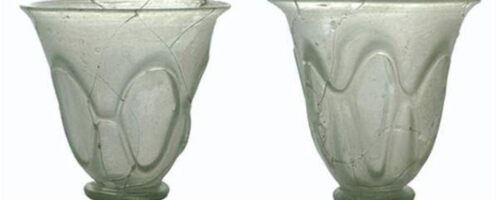Glass Roman cups from Weklice
Roman glass cups from Weklice (Warmińsko-Mazurskie Province). Discovered during archaeological research in 2010 in the graveyard of the Wielbark culture. Together with wine-drinking vessels made of bronze, they constituted a set given as a grave gift. The cups were imported from the area of the Roman Empire. They are perfectly preserved, which is unique in itself.











